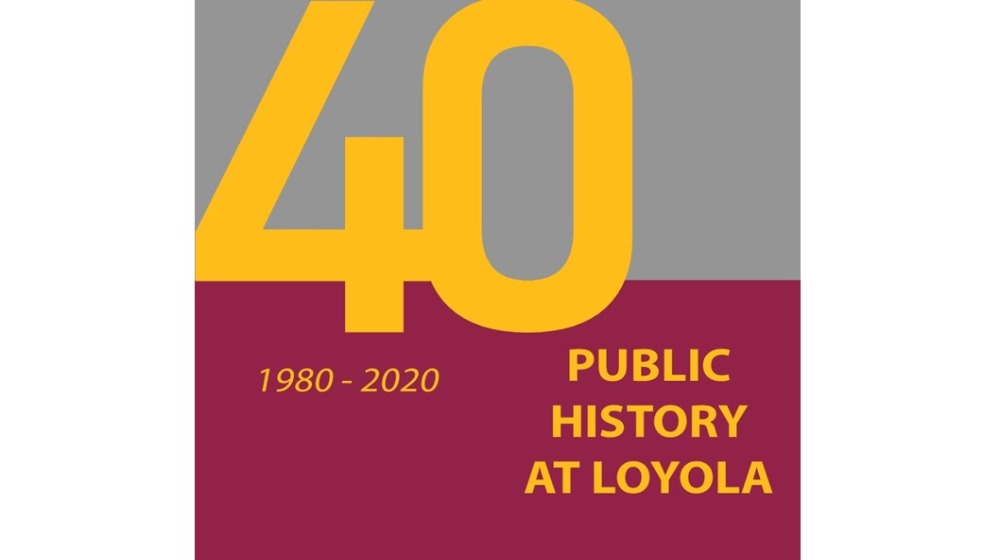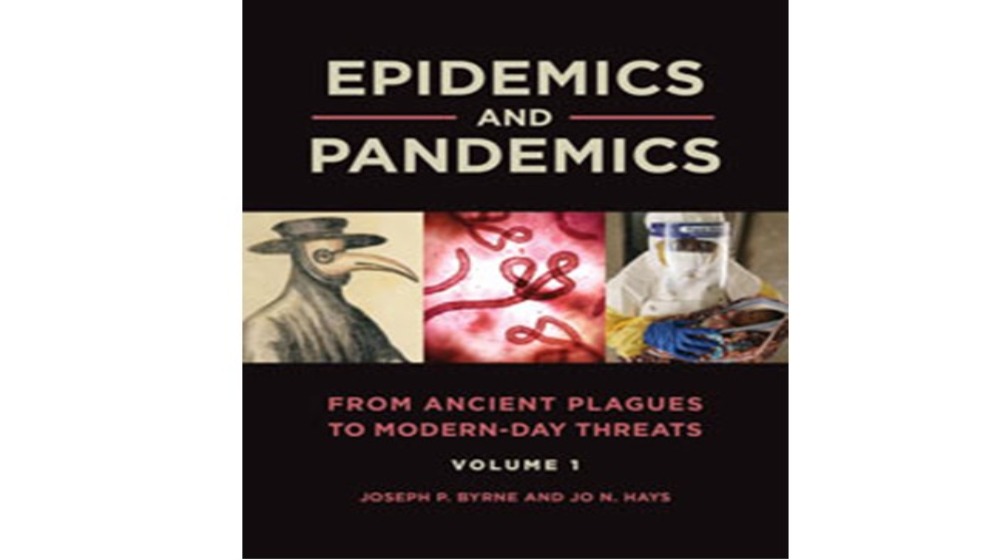archive
I am delighted to announce some good news: this month, the History Department’s Public History Program received the prestigious 2021 Founders Award from the National Council on Public History (NCPH). The award recognizes four decades of leadership by Loyola historians in nurturing, growing, and transforming the practice of public history in the U.S.
The NCPH award citation recognizes the entire Loyola Public History Program, but it especially spotlights the work of faculty Ted Karamanski and Pat Mooney-Melvin. Both have served as president of the NCPH, as board members for many years, and as editorial board members of the NCPH journal, The Public Historian. Both played formative roles in the NCPH’s early years during the 1980s, with Dr. Karamanski leading the national effort to develop a code of ethics for public historians and Dr. Mooney-Melvin working to develop pedagogies for the teaching of public history at universities across the country. And both continue to tireless promote the field of public history, encouraging new generations to explores its boundaries and diversify its practice.
The award citation also highlights the reach of Loyola’s Public History Program and the varied ways it has contributed to and shaped the important process of sharing history and historical insights in a wide range of venues. Over 200 graduates completed an impressive array of public history projects while at Loyola and then gone on to work across the country in museums, historical societies, government agencies, and universities. Our public history network continues to thrive and our graduates represent an important part of our program's success.
Numerous faculty have been involved in growing our Public History Program over many years, and it is worth listing them: Elizabeth Fraterrigo, Elizabeth Hopwood, Kyle Roberts, Kathy Young, Chis Manning, Meaghan McChesney, Janet Nolan, Harold Platt, Terri Fife, Valerie Browne, Patrick Quin, Calinda Lee, and Louise Año Nuevo Kerr.
Both the NCPH and Loyola’s Public History program started in 1980 and both celebrated their 40th anniversary last year. I expect the tight bonds between the two programs will continue for decades to come, as the practice of public history is more essential than ever as our nation seeks to tell new stories about its past and wrestle with its difficult history.
Congratulations to the Loyola Public History Faculty, and especially Drs. Karamanski and Mooney-Melvin, for a career’s worth of accomplishment in defining and transforming the field of public history.
D. Bradford Hunt, History Department Chair
Click here to view a brief video presentation of the 2021 NCPH Founders Award. 
30 March 2021
The Herbert Feis Award is a prize "offered annually to recognize distinguished contributions to public history" by the American Historical Association. Dr. Theodore Karamanski, founder of Loyola's own public history program was named the 2021 prize winner in October. MA Public History student Kenleigh Howard sat down with Dr. Karamanski to gather his thoughts on his career, projects he's proud of, and any words of wisdom for young professionals
KH: You've been an active participant in the field of public history since its official beginnings, holding several official offices over the years like a term as President of NCPH, and Director (and founder) of Loyola's Public History Program. Although each is unique, what would you say has been the most rewarding experience?
TK: I was NCPH President in my 30’s. I was the youngest of the folks involved in founding NCPH. I felt a lot of other people were more experienced, so I was intimidated at the start. Yet like most things related to public history I just jumped in, gave the job my best shot. I was hurt because the sole NCPH staff member went down with AIDS, and I had embarked on a campaign to increase membership. It was a lot of work all on my own to set up membership chairs in every state in pre-internet days. But in one year membership jumped 17%. The other thing I was proud of was running a national search for an institution to host the NCPH HQ. The final selection was quite heated, but I cast the deciding vote that selected Indiana University, Indianapolis and we are still based there more than three decades later.
Directing public history has been rewarding because of the wide variety of projects and especially because of the marvelous students I have been privileged to work with.
10 November 2021
KH: The Herbert Feis Award is largely focused on "the result of years of effort in the field," which your accomplishments certainly speak to. What have been some of the most memorable projects you've led or participated in? Which projects are you most proud of?
TK: I have done a lot of projects. One of the first was the three-year archaeological study of Millwood Plantation in South Carolina in which I handled a lot of logistics for our head archaeologist and senior historian and did fascinating local history research that got me interested in the Civil War era. Really formative were several long projects for the Forest Service in northern Michigan. We did innovative work saving the Forest service thousands of dollars. Most rewarding was working with grad students over the entire summer in the field doing oral histories and tramping through the forest looking for old logging camps and ghost town sites. It was a fun mix of history and wilderness adventure. The same could be said for my summer working for the National Park Service in Alaska exploring abandoned gold rush sites by float plane or boat, mapping sites and interviewing backwoods old timers.
KH: What impact have professional groups like the AHA and NCPH made in your career?
TK: I am grateful to AHA for the Feis Award but even though I was a member for more than thirty years I never was much involved save for going to the annual meeting every few years. NCPH, on the other hand has been the professional home in which I grew up. The founding of the organization was incredibly exciting in part because the senior people involved were so welcoming and supportive to a novice like me and because it was clear we were blazing a new trail for the history profession. My closest friends in the profession were all made through NCPH including my valued colleague Patricia Mooney-Melvin.
KH: What words of wisdom do you have to offer to new generations of public historians/emerging professionals?
TK: There is a quote I found as a student that I fall back on when facing a challenge. It is from the sailor-novelist Joseph Conrad’s book Lord Jim: “To the destructive element submit yourself, and with the exertions of your hands and feet in the water make the deep, deep sea keep you up.” In other words, embrace every opportunity, trust your ability to master the situation through hard work.
KH: Just this year, you published another book, Mastering of the Inland Seas: How Lighthouses, Navigational Aids, and Harbors Transformed the Great Lakes and America. Are there any future works people should look forward to from you?
TK: I am a little more than halfway through a book that will be an environmental history of Lake Michigan. At the same time Mooney-Melvin, Katie McGranahan, and myself are halfway through a cultural sensitivity project with the Cook County Forest Preserve District. There always is the vexing balancing act between doing public history and writing for publication.
Dr. Jo Hays Book Publication

Professor Emeritus Jo N. Hays recently authored a timely new reference book, Epidemics and Pandemics: From Ancient Plagues to Modern-Day Threats. ABC-CLIO, a specialty academic publisher for mass-market library reference books, published the two-volume set. Dr. Hays co-authored the books with Dr. Joseph P. Byrne, a professor of medieval and early modern European history at Belmont University. A project six years in the making, the books were fittingly released this year to help readers understand the current coronavirus pandemic by learning about its contemporary context and how epidemics and pandemics have affected world history by looking at humanity’s response to such crises. In Volume 1, Dr. Byrne covers and explains what epidemics are and how human society spread and controlled contagious diseases. In Volume 2, Dr. Hays presents examples of past epidemics and pandemics and how they left a lasting impact on history, from malaria in ancient Rome to measles outbreaks in the United States today.
The books show how people interpreted the causes of diseases, such as malign spirits, divine will, individual or group responsibility (whether intended or inadvertent), contagion, environmental corruption, or the invasion of the body by other organisms. These beliefs about cause in turn lead to the casting of spells, prayer, isolation, or stigmatization of those responsible, isolating the contagious ones, purifying the environment, or attacking the invading organisms. In his volume, Dr. Hays describes 52 epidemics and pandemics throughout world history in layman terms. He notes the context of each outbreak and reveals its significant influence on history. Each of these events’ historical backgrounds is summarized with an explanation of the disease’s biological origin and the state of scientific and medical knowledge at that point in history. He then illustrates how society responded to the outbreak and analyzes how historians have viewed the event in the historical record. Dr. Hays hopes that these volumes will help readers comprehend human disease in a larger societal context involving life and death situations.
For information about the publication and to purchase a set, please click HERE.
